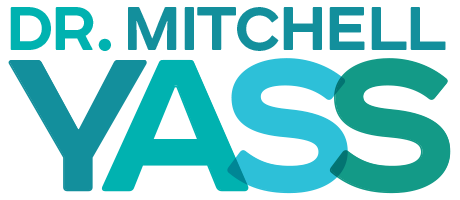
Let’s face it. The medical system is not very good in resolving pain. I think that has become a well documented fact. No studies need to be performed. Just look around you at your family, friends and coworkers and see the failed results of specialists, treatments and medications. Look at the lives that have been destroyed by trying to seek medical attention to resolve the cause of their pain. Just try to wrap your head around these numbers; 130 million adult Americans suffer from chronic pain and roughly 1 billion people worldwide. Clearly something is wrong in the way pain is being treated. The answer is clearly in how the cause of the pain is being diagnosed. That is primarily the MRI. You have pain you seek medical attention and an MRI is ordered. It identifies a structural abnormality like a herniated disc, stensosis, pinched nerve, arthritis or meniscal tear and the assertion is made that just because these structural variations are identified for the first time at the time pain is being experienced it must be the cause of the pain. What I would point out to you is that there is never a recognition of the symptoms being experienced. There is not attempt to understand them. For instance, does the location of the pain being experienced coincide with where pain would be expected if the structural variation identified would create pain? This would seem like a logical question but the fact is that in almost every case I have treated when a diagnose was given based on the MRI the person’s pain could never have been caused by the structural variation identified. Let me say this again. The pain being experienced could never have been created by the structural variation identified by the MRI. That means that any attempt to treat the structural variation would do nothing to resolve the pain being experienced. I knew this because I evaluated the symptoms being experienced and recognized that pain is an indication of a tissue in distress. To understand what tissue is in distress you must understand the symptoms being created. I am sure that this seems counter-intuitive in this day and age when you have been programmed to believe that by simply getting an MRI the cause of your pain will be identified. This is completely baseless and the primary reason that treating the structural variations identified even with surgery is sustaining chronic pain.
I need you to think more like a detective than a patient if you are going to understand how to properly identify and treat the cause of your pain. Let’s start with a basic understanding of how the body works in trying to make you aware that something isn’t working in your body. Let’s say you start feeling a pounding in your chest out of no where. You start to get nervous because this particular symptom is representative of distress to the heart. Palpitations is part of the body’s emergency distress system to help you know that the heart is in distress. Let’s say a noxious object enters the nose. The body recognizes this and because of distress of the lining of the nose the body creates the symptom of sneezing. You sneeze as a symptom of the emergency distress signal triggered by distress or irritation of the lining of the nose. Let’s say you eat something that is foul. You end up getting stomach cramps. The cramps are part of the body’s distress system. The symptom of stomach cramps is ignited by distress of the lining of the stomach. So what you see here is that every time you experience a symptom in the body it is part of the body’s distress system to make you aware of distress of a tissue which actually ignited the symptom being experienced.
Now let’s look at the neck, back and extremities. The same theory holds true. If pain is experienced it is because a tissue is in distress and has ignited the pain to make you aware of the distress so you can get a treatment to resolve the distress of the tissue. Once the distress of the tissue is addressed, it is no longer required to elicit the distress signal and pain ceases. So let’s look at the typical tissues that might be in distress and what types of signals they might create. Let’s look at the neck and lower back. When you get pain at one of these locations you have been programmed to believe it is automatically coming from the spine and the tissue in distress is a nerve. But are there other symptoms or physical indicators that can help you determine if this is true or not? The answer is yes. Let’s take the idea that for most people the pain they experience in the neck or lower back is a few inches to either side of the spine. The first physical indicator as to what is the tissue in distress comes from trying to press on the spot where the pain is being experienced. Since this is a few inches off the spine if you can elicit your pain or make it worse by pressing on this spot you are most likely pressing on a muscle. So the fact that you pressed on a muscle and it ignited or worsened your pain would certainly be an indicator that the tissue in distress is a muscle. The next indicator to look at is whether it is even possible for a structural variation of the spine or nerve to be the cause of the pain. If the pain were coming from the spine and you are experiencing the pain a few inches off the spine then that would mean that the pain must be being referred from the spine; this means that the cause of the pain is at the spine but the pain is being experienced somewhere else. To prove this theory you simply have to press on the spine and see if you can bring on the pain a few inches off the spine The answer is probably no. But you did bring on the pain or worsen it when you pressed on the spot a few inches off the spine. That means that the pain is where you pressed and therefore it is not referred. This means that any structural variation identified could simply not be creating the pain that is a few inches off the spine. What you have to accept is that the structural variation exists but is not causing pain. You can accept this idea because in a study of people over the age of 60, 90% of those with no back pain were found to have bulging or degenerative discs.
Let’s take an the example of the knee. You are told that your knee pain that exists around the knee cap is coming from being bone on bone that was supposedly identified by an x-ray. Let’s examine the symptoms and see if this makes sense. When somebody refers to being bone on bone at the knee they are referring to the joint between the thigh bone and lower leg bone. Therefore if pain were to be elicited it would have to be at the joint between those two bones. That would be on the side of the knee joint. The knee cap runs in a groove in the thigh bone. This is a completely separate joint from the joint between the thigh bone and lower leg bone. Therefore any type of structural variation at the joint between the thigh bone and lower leg bone could never cause pain around the kneecap. By understanding the symptoms including the location you can see that what is being called the cause of the knee pain simply could never be true. Are there any clues that could lead to an understanding of the cause of pain around the kneecap? The answer is yes. You may muscle test the quads, front thigh muscles and hamstrings, back thigh muscles and find an imbalance in which the quads are muscle stronger. This would lead the quads to shorten and pull excessively on the kneecap causing it to be compressed when bending the knee and leading to pain around the kneecap. You could do flexibility testing and confirm that the quads are severe shortened while the hamstrings are severely lengthened which would reinforce this as the cause. The body is presenting physical indicators to prove what is and what is not the tissue in distress.
let’s look at pain at the shoulder. You have pain and you get an MRI that says a labral tear or arthritis is causing your pain. Let’s see if there are other physical indicators to tell you what is causing the pain. First you check the range of motion of the shoulder. You find that you have full range even if there is some pain when achieving this. If arthritis or a labral tear were causing the pain, they would block the range of motion of the shoulder joint so there would have to be a major loss of range of motion. If you had somebody else move the shoulder joint and there is no pain when if you moved it there is pain that also proves that the tissue in distress is muscle because you are using your muscles to move the shoulder when you move it but no muscles are used when somebody else moves it so if pain is only experienced when you move it, it must be a muscle in distress eliciting the pain. Next you can feel for where your pain is coming from. If you feel pain experienced when you press on the front of the joint you are most like pressing on the bicep tendon so you just proved that the pain is coming from a tendon not the joint itself. If you then muscle tested and flexibility tested the muscles of the shoulder you would most likely find that the rotator cuff is strained and shortened. All of these physical indicators would show that the labral tear or arthritis identified is not the tissue in distress emitting the pain being experienced.
Hopefully from these examples you can see that by looking at the physical indicators that the body presents you are must more apt to identify the tissue in distress that is emitting the pain being experienced. Diagnostic tests rarely will properly identify the tissue in distress. In more than 90% of cases it is simply finding a structural variation that existed long before the pain began and is falsely being correlated to the pain because it is found for the first time when the pain existed. If you want to resolve your pain, you must identify the tissue in distress. By using diagnostic testing the wrong tissue is most likely to be identified and treated leaving the tissue in distress to continue to elicit the emergency signal of pain which is the reason that chronic pain exists. The Yass method uses an interpretation of the body’s presentation of symptoms to identify the tissue in distress. If the tissue in distress is found to be muscular then Yassercise is implemented isolating the appropriate muscles using progressive resistance to cause the muscles to adapt to greater resistances until the muscles are able to perform functional tasks without straining and eliciting pain. To make an appointment to get treated through the Yass method or if you have further questions, please contact me at drmitch@mitchellyass.com
You can purchase my books, The Pain Cure Rx or Overpower Pain by clicking on one of the links below.
To purchase the resistance bands I recommend to perform the Yassercise progressive resistance strength training exercises click on one of the links below.
